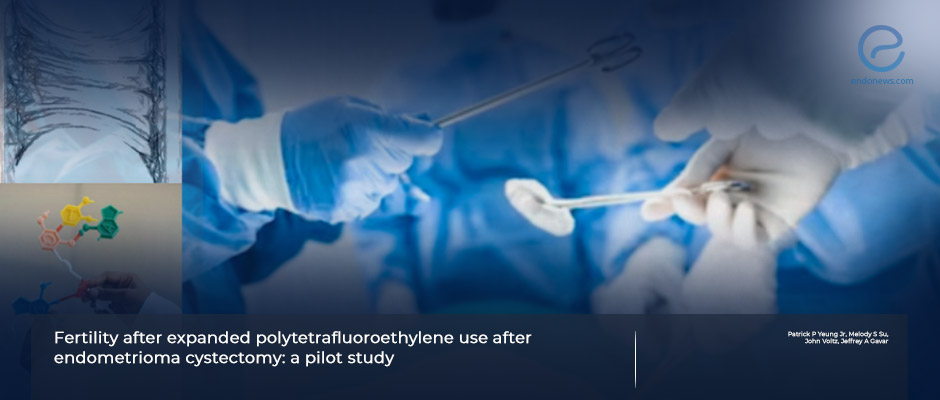Ovarian adhesion prevention with polytetrafluoroethylene during endometrioma surgery.
Jan 30, 2024
Using expanded polytetrafluoroethylene around affected ovaries may help to improve fertility.
Key Points
Importance:
- Pelvic adhesions secondary to endometriosis or surgical procedures have been proposed as a cause of infertility.
Highlights:
- Although the statistical significance was not different, the pregnancy rates with expanded polytetrafluoroethylene were higher.
What's done here:
- This prospective study examines the effect of the use of expanded polytetrafluoroethylene placement around ovaries during endometrioma surgery, on cumulative pregnancy rates.
- The cumulative pregnancy rate of 8 women in the ePTFE group and 11 women who did not accept the application were compared.
- The exclusion criteria were having a hysterectomy during the operation, completing only six months of follow-up, and avoiding pregnancy after surgery.
Key Results:
- After four years of follow-up, the total pregnancy rate was 48.3%. No statistical difference was found between the study and control group among women who were already fertile.
- Among infertile women who did not avoid pregnancy, 8 women in the study group and 2 women in the control group got pregnant.
- This study was underpowered to detect significant differences in pregnancy rates, may be due to the small sample size.
- However, the higher pregnancy rates with ePTFE and the reassuring safety profile of ePTFE, indicate that subsequent studies with larger sample sizes are worth pursuing.
Lay Summary
The World Health Organization defined infertility as the inability to conceive after 12 months of regular unprotected intercourse or after six months of fertility-focused intercourse. Depending on the chronic inflammatory character and causing adhesion formations within the peritoneum, endometriosis is one of the diseases that cause infertility.
Adhesion prevention strategies with liquids and solid barrier agents have been studied recently. Multiple commercial barrier products are available to prevent adhesions, including oxidized-generated cellulose, hyaluronate carboxymethyl cellulose, icodextrin, andexpanded polytetrafluoroethylene (ePTFE). However, no studies investigated the relation between adhesion preventive methods and further endpoints, such as pregnancy rates.
Dr. Yeung Jr., from Saint Louis University School of Medicine, USA, explained the ePTFE application technique to his patients with greater than 3 cm endometrioma and gave a self-selecting choice before the endometrioma surgery. His research team followed the patients after surgery and statistically evaluated the pregnancy rate of women with or without ePFTE application. Patients completed preoperative surveys as well as postoperative ones, mailing every six months to their e-mail addresses.
Based on the results of the study, the authors concluded the pregnancy rates in the ePTFE group are promising that adhesion prevention may improve fertility in women with endometriosis, especially those who were infertile before the surgery.
This preliminary but exciting study was recently published in the journal Frontiers in Reproductive Health.
Research Source: https://pubmed.ncbi.nlm.nih.gov/38076007/
polytetrafluoroethylene adhesions laparoscopy cystectomy fertility pregnancy rates endometrioma endometriosis.

